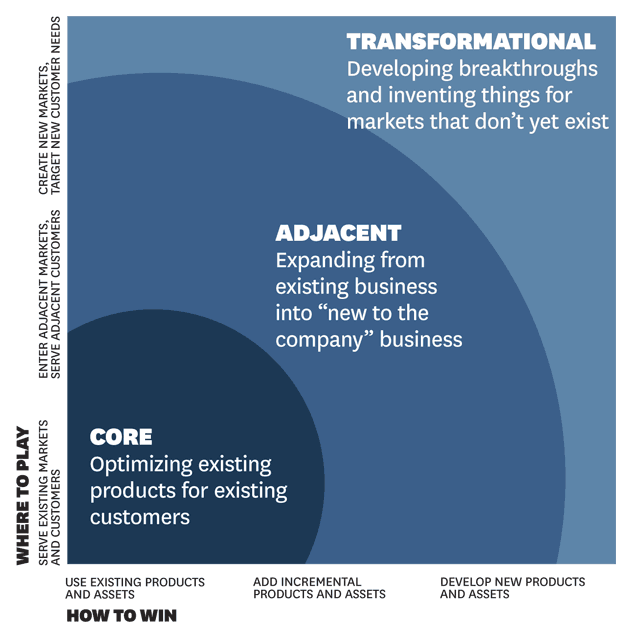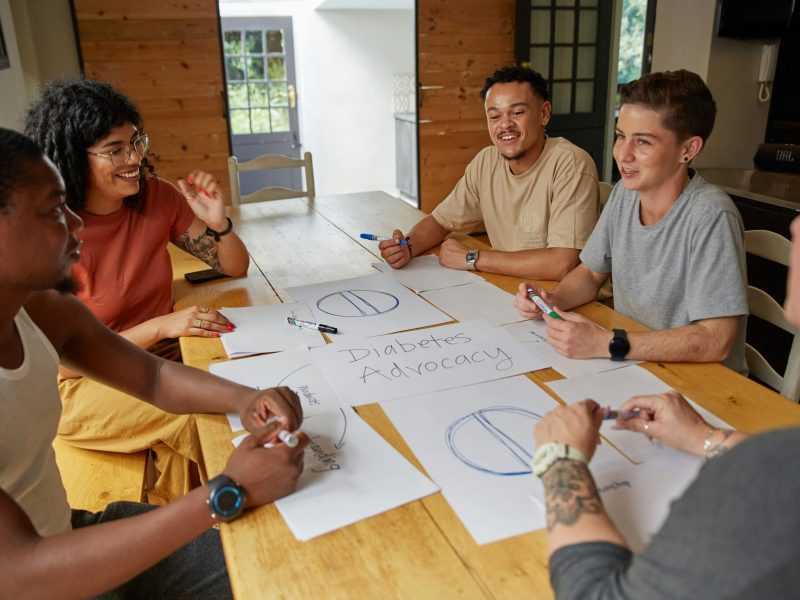Introduction to Business Design and UX
A UX Designer’s Guide to Driving Innovation and Growth
In an era where user expectations and market dynamics shift rapidly, businesses need a structured approach to innovation. A business design toolkit bridges UX expertise with strategic growth, enabling companies to optimize core offerings, explore adjacent markets, and pioneer transformational breakthroughs.
This post guide dives deep into each horizon, offering tactical advice, real-world examples, and SEO-optimized insights to empower UX designers and business leaders alike.
The Three Horizons of Business Design: Expanded Strategies and Details
1. Core Horizon: Optimizing Existing Products for Existing Customers
Objective: Refine and enhance current offerings to maximize customer satisfaction, retention, and operational efficiency.
Detailed Strategies:
- User-Centric Iteration:
- Conduct continuous usability testing to identify pain points. For example, Dropbox increased sign-ups by 10% by simplifying its onboarding flow after observing user struggles.
- Use A/B testing tools like Optimizely to validate design changes. Amazon’s “1-Click Ordering” patent, refined through relentless testing, reduced cart abandonment by 15% (USPTO).
- Data-Driven Insights:
- Customer Feedback Loops:
- Implement in-app surveys (e.g., Typeform) to gather real-time insights. Slack’s Core strategy involves quarterly user interviews to prioritize feature updates (Slack Case Study).
Challenges & Solutions:
- Resistance to Change: Overcome stakeholder skepticism by presenting data-backed ROI. For example, showcase how a 5% improvement in checkout flow can increase revenue by $1M annually.
- Tool Suggestion: Use Looker to create dashboards that visualize the impact of UX changes on KPIs.
2. Adjacent Horizon: Expanding into “New to the Company” Markets
Objective: Leverage existing capabilities to enter new customer segments, geographies, or product categories.
Detailed Strategies:
- Market Adaptation:
- Conduct cross-cultural UX research to tailor products. Netflix’s expansion into India involved localizing content and adding regional payment options, boosting subscriptions by 30%.
- Use UserZoom for remote usability testing across demographics.
- Asset Repurposing:
- Adobe’s shift from Creative Suite to Creative Cloud reused its software expertise to create a subscription model, increasing recurring revenue by 50% (Adobe Annual Report).
- Audit internal tools with Miro to identify underused assets (e.g., APIs, customer databases).
- MVP Validation:
- Partner with cross-functional teams to test MVPs. For instance, Spotify’s podcast expansion began with a small-scale launch in Sweden before global rollout (Spotify Newsroom).
Challenges & Solutions:
- Market Fit Uncertainty: Validate assumptions through lean experiments. Use Lean Canvas to map hypotheses and pivot quickly.
- Tool Suggestion: SimilarWeb for competitor benchmarking in new markets.
3. Transformational Horizon: Inventing for Markets That Don’t Yet Exist
Objective: Create disruptive products or services that redefine industries.
Detailed Strategies:
- Speculative Design:
- Cross-Disciplinary Collaboration:
- Partner with R&D teams to align moonshot ideas with user needs. Google X’s self-driving car project (Waymo) combined AI expertise with UX safety protocols (Waymo).
- Host innovation workshops using IDEO’s Design Thinking Kit.
- Trend Analysis:
- Leverage platforms like Gartner or CB Insights to identify emerging technologies. Tesla’s bet on electric vehicles was informed by clean energy trend reports (Tesla Impact Report).
Challenges & Solutions:
- High Uncertainty: Mitigate risk with phased investments. Meta’s metaverse strategy began with incremental VR hardware releases (Oculus) before scaling (The Verge).
- Tool Suggestion: FutureLearn’s Futures Wheel to map ripple effects of trends.
Strategic Frameworks for Each Horizon
1. Leveraging Existing Assets
- Core: Audit tech stacks to identify reusable components (e.g., APIs, user data).
- Adjacent: Repurpose brand equity for new markets. Coca-Cola’s “Share a Coke” campaign reused its logo for personalization, driving a 7% sales lift (Coca-Cola Journey).
- Transformational: Convert R&D findings into scalable solutions. IBM’s quantum computing research led to cloud-accessible tools for enterprises (IBM Research).
Tool: Airtable for asset inventory management.
2. Adding Incremental Products/Assets
- Prioritization Frameworks:
- RICE Model: Assess Reach, Impact, Confidence, and Effort. Airbnb used RICE to prioritize “Experiences” over other features (Intercom).
- MoSCoW Method: Categorize tasks into Must-haves, Should-haves, Could-haves, and Won’t-haves.
- Case Study: Instagram’s “Stories” feature, inspired by Snapchat, was a low-risk Adjacent move that increased daily users by 300M (TechCrunch).
3. Developing New Products/Assets
- Design Sprints:
- Use Google Ventures’ 5-day sprint framework to prototype transformational ideas.
- Example: Fintech startup Revolut tested cryptocurrency trading in a sprint, leading to a $500M revenue stream (Reuters).
- Ethnographic Research:
- Study underserved communities to uncover latent needs. Procter & Gamble’s “Tide Eco-Box” emerged from observing water scarcity challenges (P&G).
Tool: Mural for collaborative sprint planning.
Integrating UX into Business Strategy: Advanced Tactics
- Align UX Metrics with Business Goals:
- Map Net Promoter Score (NPS) to customer lifetime value.
- Track task success rate against conversion goals.
- C-Suite Collaboration:
- Present UX roadmaps using Business Model Canvas to align stakeholders.
- Example: IBM’s Design Thinking program trained executives to prioritize user empathy, reducing product launch cycles by 75% (IBM Design).
Future-Proofing Your Toolkit
- AI-Powered Personalization:
- Tools like Dynamic Yield enable real-time UX adjustments based on user behavior.
- Ethical Design:
- Adopt W3C’s Web Accessibility Guidelines to ensure inclusivity.
- Web3 and Decentralization:
- Explore DAOs (Decentralized Autonomous Organizations) for community-driven innovation.
Conclusion
A business design toolkit is not static—it evolves with market shifts and technological advancements. By mastering Core optimization, Adjacent expansion, and Transformational disruption, UX designers can become strategic partners in driving sustainable growth.


